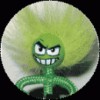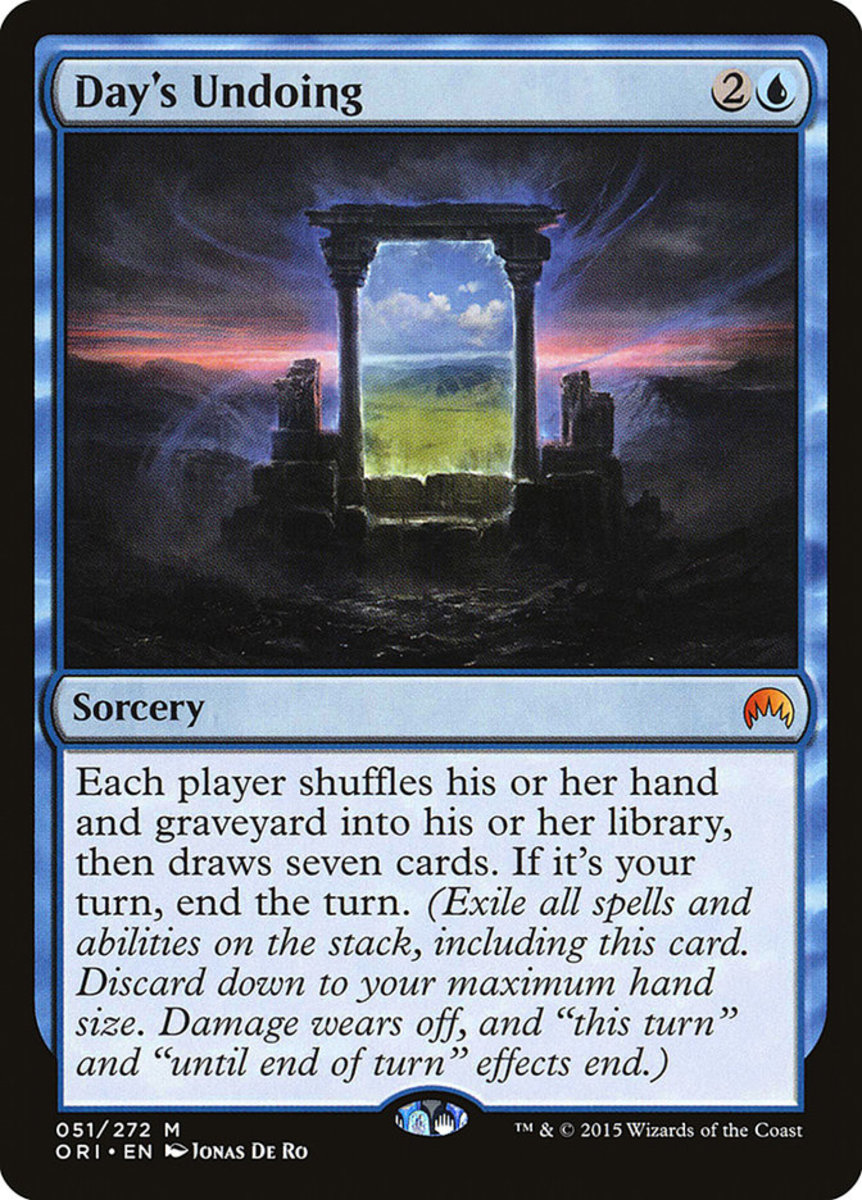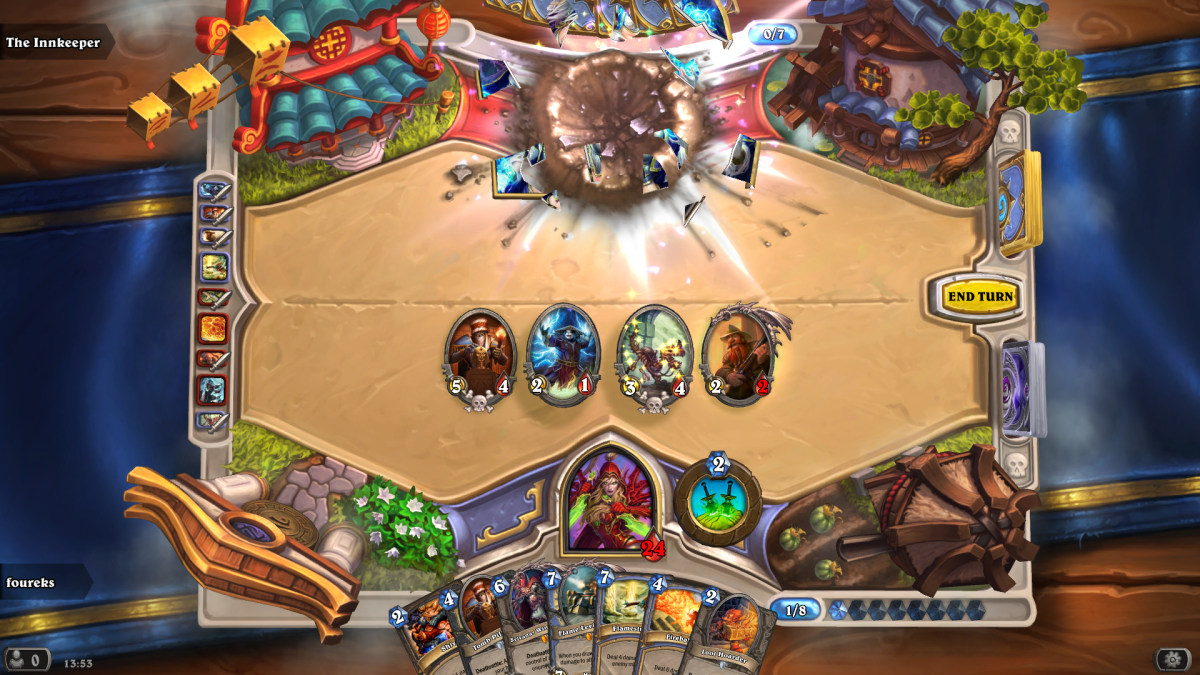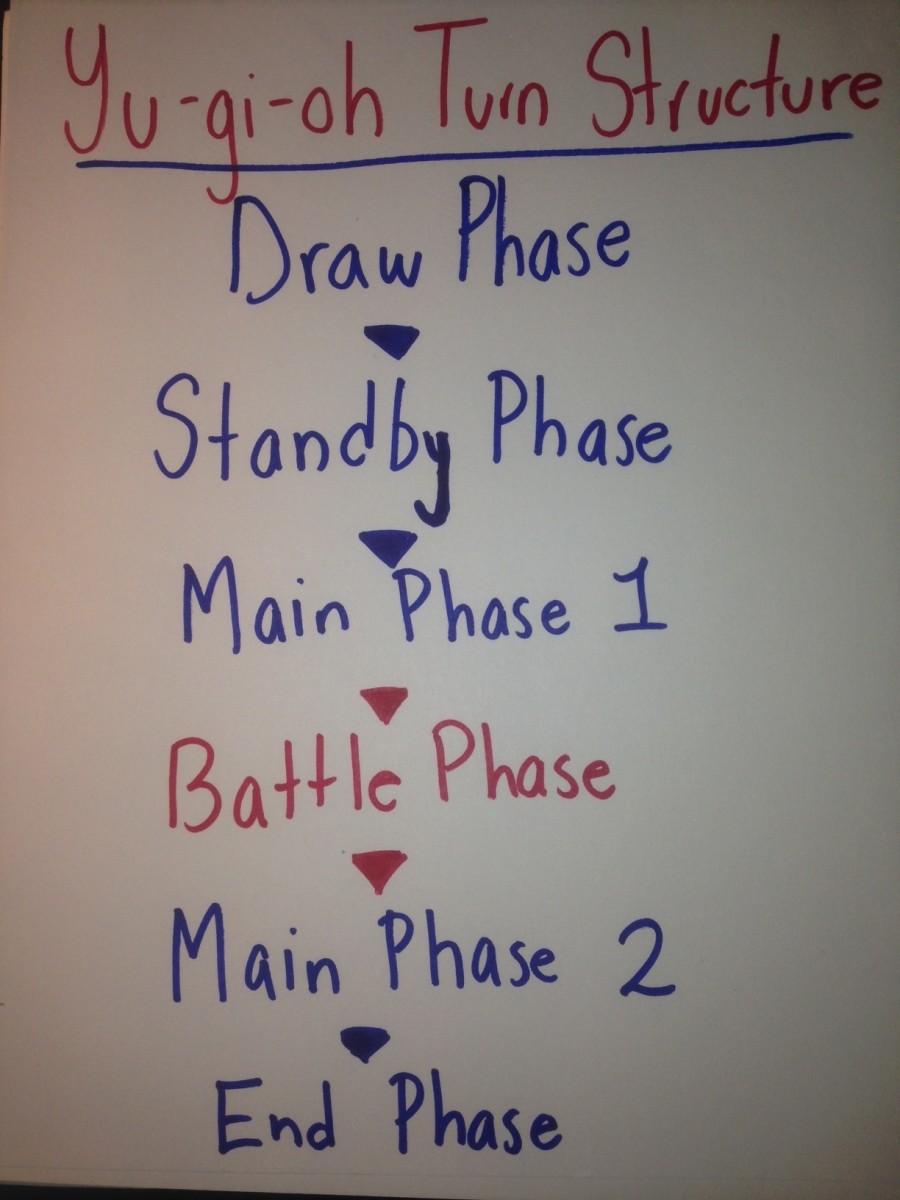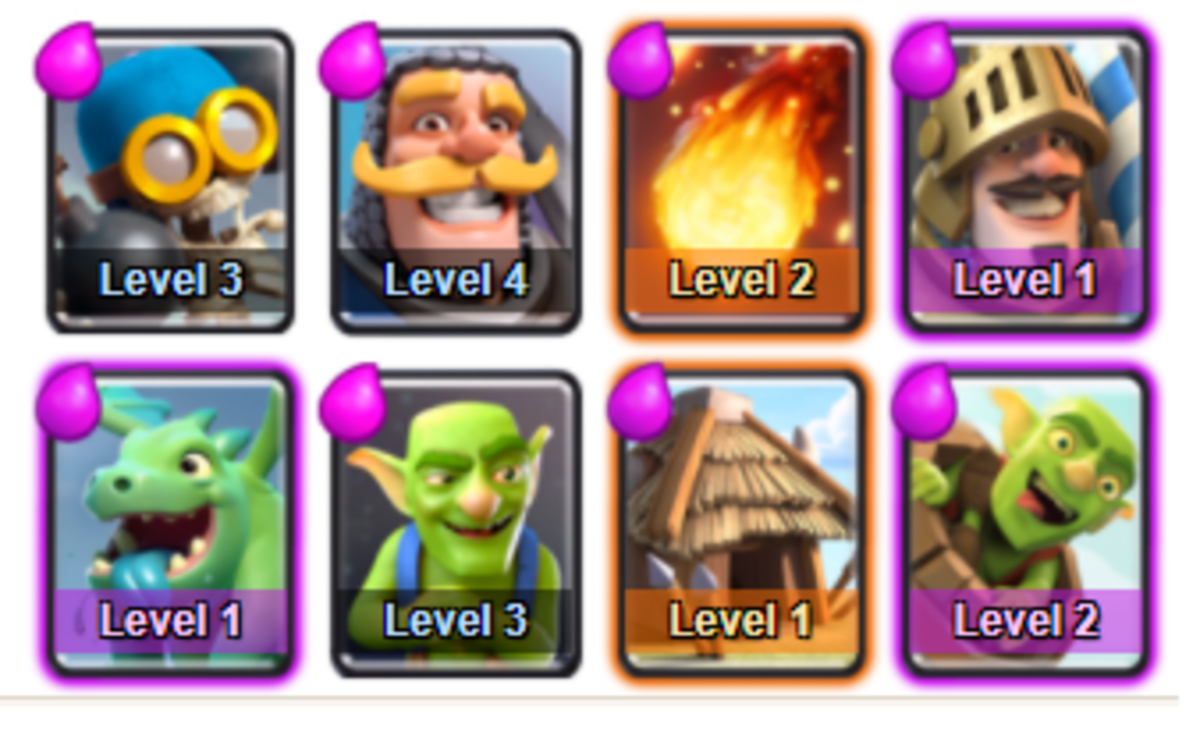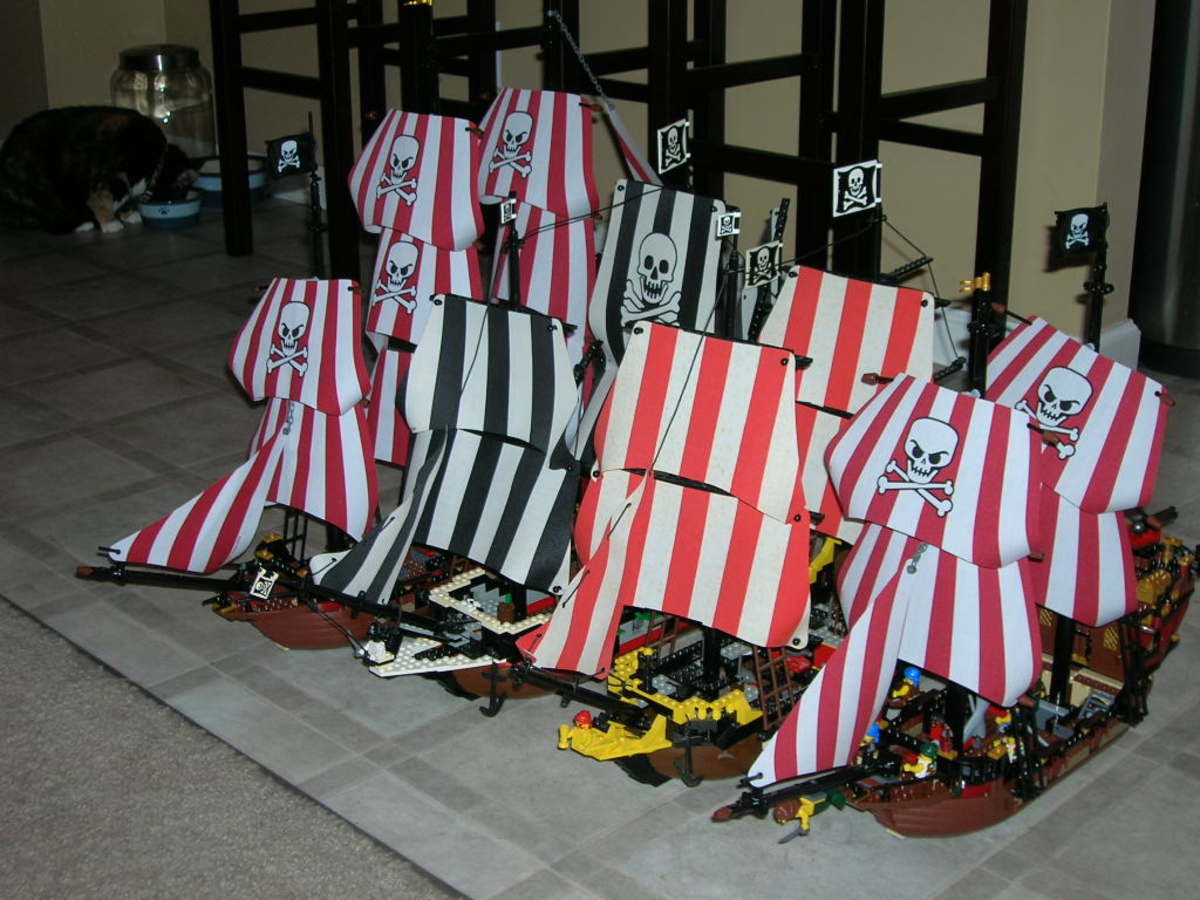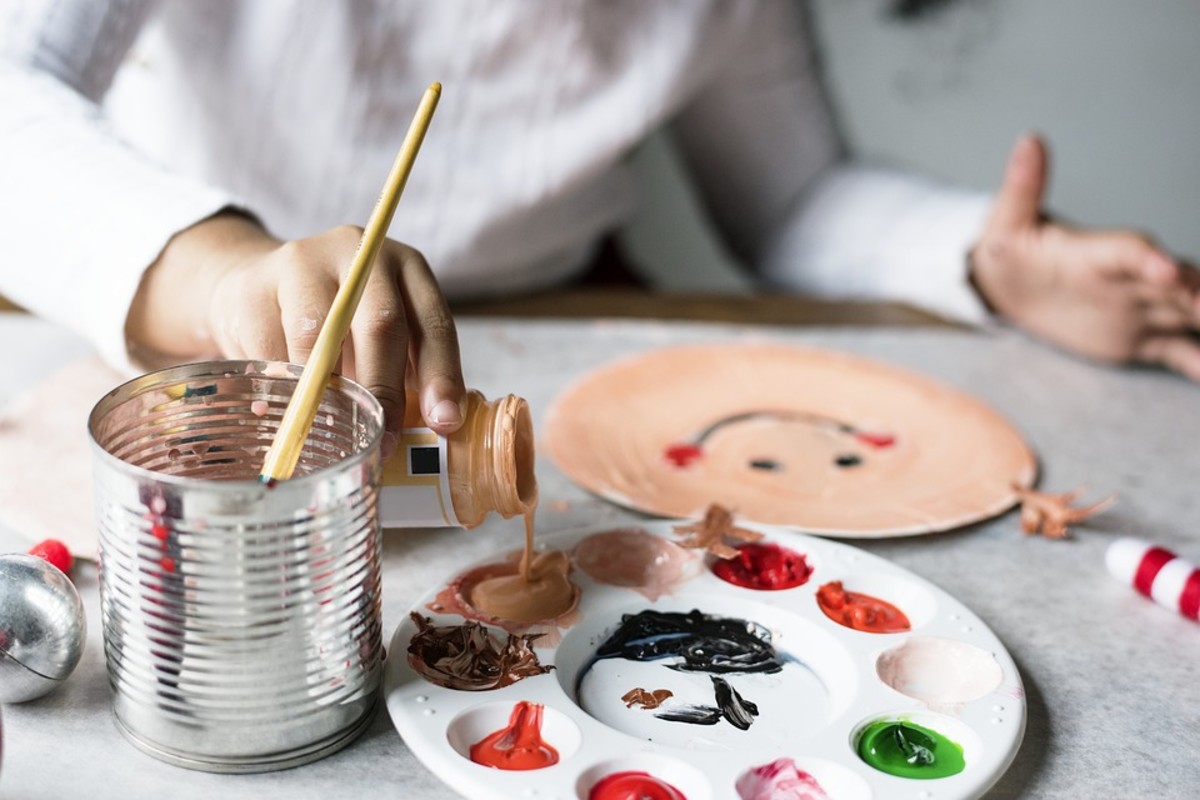How To Play YuGiOh! Part 1 - Decks
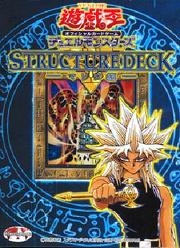
Introduction - What is a YuGiOh! Deck?
Welcome to the first chapter of our How To Play YuGiOh! guide. One of the most popular hobbies in the world, YuGiOh! is played everywhere from school playgrounds, to small local hobby stores, to national and world championships. The YuGiOh! Trading Card Game is based on the YuGiOh! Anime and Manga, which both revolve around characters who play the card game. There's also video games, which feature characters who - you guessed it - play the card game.
If you're reading this, then chances are that you're either thinking about starting playing the game of YuGiOh! (or a child is) or have just started playing. Over the course of a number of chapters, we'll do our best to explain what is a complicated game, in clear English, with no prior knoweldge needed.
The first thing you'll need to think about if you're starting to play YuGiOh! is a deck of YuGiOh! cards. Players play with a minimum of 40 cards in their main deck (plus extra decks and side decks - we'll explain these later), but then there are well in excess of 3000 cards to pick from, so where to start? Read on...
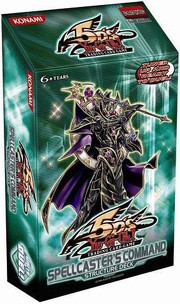
Buying Your First YuGiOh! Deck
As we said in the last section, there are over 3000 cards to pick from. To build a YuGiOh! deck, you'll need to narrow that number down to 40 or so, and find a blend of monster, spell and trap cards (more on these later), that work together. You'll need to acquire the cards you need from booster packs, whilst always bearing in mind cards that are Banned or Restricted to less than the normal 3 copies in organised play.
Sounds daunting, doesn't it? However, fear not. The nice folks at YuGiOh! have produced over the years a series of Starter and Structure Decks. These are boxed sets, containing a set of cards that work together and can be enjoyably played with. They're never going to win tournaments on their own (the main thing that makes the game interesting is designing your own deck to beat your opponents) but they're the place to start.
So what's the difference between a Starter and a Structure Deck? The honest answer is 'not much'. In theory, a starter deck contains cards which are more straightforward than those in a structure deck. Whatever. You'll need to buy lots of cards to get good at this game, so your initial choice isn't that important - pick one you like the sound of.
If you're reading this page and haven't bought a pre-boxed deck yet, we'd highly recommend that you do before going on with this guide. Bookmark this page, and see if you can get a deck at a local hobby store. Failing that, if you live in the US, there's links to Decks on Amazon and eBay lower down. If you live in the United Kingdom, BSTS, the creators of this guide (amongst many fine retailers) stock a wide range - again you can find the link to our website further down the page.
Stick with the cards from the pre-boxed deck while you learn to play. Don't be tempted to switch cards in and out or attempt to build your own deck until you've got to grips with the rules.
Great Deck Bargains from Amazon
Here's a great selection of Starter Decks, for players from the United States, from recent releases to old classics:
How Many Cards In My Deck?
You must have at least 40 cards and a maximum of 60 in your main deck. Try to stick to 40 - 41 or 42 if you absolutely must. No more than that. Why? Well, quite simply the lower the number of cards in your deck, the better chance you have to draw what you really need, when you really need it.
An extra deck is separate from your main deck. That's where your Synchro and Fusion Monsters live. Much more on them in later chapters. In the meantime, all you need to know is that your extra deck can contain up to 15 cards - it's subject to the normal maximum of 3 copies of any one card (and a few Synchro & Fusion monsters are on the restricted/forbidden list, meaning you're restricted to fewer than 3 copies)
In tournament play, you can also have a Side Deck. It can contain up to 15 cards if you decide to use one. In tournaments, matches are normally best of 3 duels. After the first duel, you can change some of the cards from your main deck with some in your side deck - exactly the same number that go out, must come in. This allows you to keep some specialist cards up your sleeve for playing against specific deck types. For now though, don't worry too much about a side deck.
What Does a Monster Card Look Like?
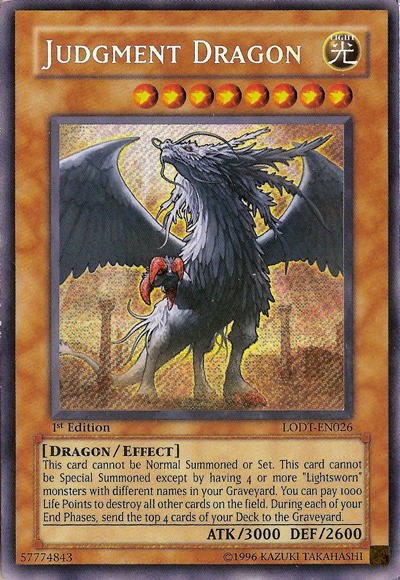
Here's a monster card - one of the most famous monster cards in the game - Judgement Dragon. There's a few things to notice on the card.
1 At the very top of the card, you'll see its name, and to the right of the name, the card attribute - in this case LIGHT. These attributes can be important for card effects.
2 Immediately underneath, you'll see a series of stars. This represents the level of the monster. In this case Level 8.
3 Next is the picture. I love the artwork on the cards almost as much as I love the game.
4 On the line below the picture, you can see if a card is 1st Edition or not (This one is - if it doesn't have 1st Edition here, it is called an 'unlimited' edition card.) and also the set number. Here the set number is LODT-EN026 meaning it came from a Light of Destruction booster pack (the LOTD bit), it's an English card, and its number 26 in the series. This is just for interest, and collecting - it's irrelevant to the game.
5 The next line gives the type of monster, in this case DRAGON/EFFECT. Again the Dragon part, like the LIGHT attribute, may have a bearing on other cards effects. The word EFFECT means that Judgement Dragon does more than just attack and defend - the game effect that Judgement Dragon has is described in the text below. If it didn't have an effect, we'd call it a NORMAL monster. Normal monsters are few and far between nowadays - the cards are lighter brown to distinguish them.
6 Finally, there is the Attack (ATK) and Defence (DEF) of the monster.
In all, there are five colours of Monster Cards in YuGiOh!
Light Brown - Normal Monster
Brown - Effect Monster
Blue - Ritual Monster
Purple - Fusion Monster
White - Synchro Monster
Much more on all of these in due course.
Decks in Video
When you start to build your own decks, one rich source of ideas is Youtube. Thousands of players around the world upload videos of their latest decks, so there's never a shortage of inspiration.
Here's just a few examples...
What Does a Spell Card Look Like?
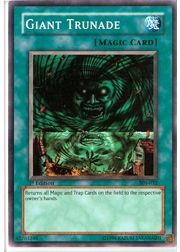
Here's an example of a spell card - again a famous one in the game - Giant Trunade. There's not nearly as much to notice as on a monster card, and much of it would be repeating stuff from above. The only new thing to notice is the description of what the card does, in the light green part. Spell Cards are always green. We'll cover how to play Spell Cards in a later chapter.
What Does a Trap Card Look Like?
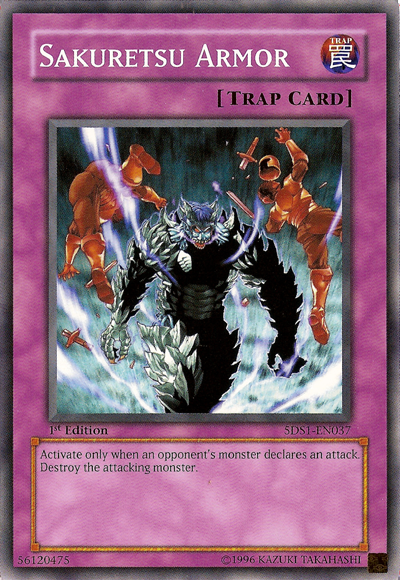
Here's a famous little Trap Card - Sakuretsu Armor - the information on Trap Cards is very like Spell Cards, but the two are used in different ways in the game. More on how to use Trap Cards later.

About Us
This YuGiOh! tutorial was brought to you by BSTS, a toy and hobby retailer based in the United Kingdom. We're passionate about YuGiOh! and are an official event location.
If you live in the United Kingdom, you can browse our wide range of cards on the YuGiOh! section of our website.
We also create loads of information pages like this one, for players and fans. You can find the index to all our YuGiOh! pages here.
Structure Deck Bargains...
Here's a selection of Structure Decks available on eBay right now. As we said above, if this is your first deck, don't worry too much about your choice. Probably best just to grab one that's going cheap...
Onto the next chapter...
The second chapter in our 'How to Play YuGiOh!' series covers the different types of monster cards used in the game. You can find the second chapter of 'How to Play YuGiOh!' here.
Did you find this guide helpful? Anything you think should be added? Any questions you'd still like to ask of us? Or just say 'hello' if you're passing by.
All comments are approved first and normally appear within 24 hours. You don't need to register or give any details to comment - everyone's welcome!
